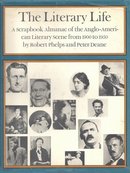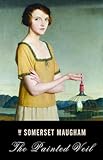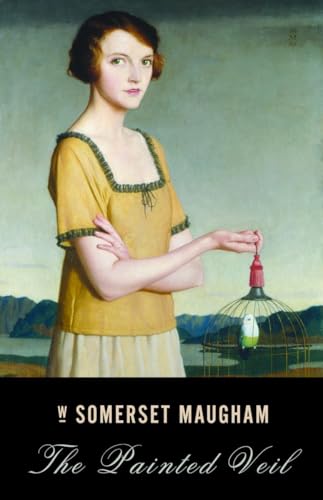 With the publication in 1968 of The Literary Life: A Scrapbook Almanac of the Anglo-American Literary Scene from 1900 to 1950, Robert Phelps and Peter Deane seem to have presaged the Facebook era in recognizing how much we – literary folk in particular – love tidbits and gossip. The Literary Life takes us through the first half of the 20th Century in literature, yearbook style, “Comprising pictures, gossip, homage, warnings and clues – together with laurels, letters, lists and whispered asides.” In a given year, we see several lists – “a rich cross-section of the creating matrix” – including:
With the publication in 1968 of The Literary Life: A Scrapbook Almanac of the Anglo-American Literary Scene from 1900 to 1950, Robert Phelps and Peter Deane seem to have presaged the Facebook era in recognizing how much we – literary folk in particular – love tidbits and gossip. The Literary Life takes us through the first half of the 20th Century in literature, yearbook style, “Comprising pictures, gossip, homage, warnings and clues – together with laurels, letters, lists and whispered asides.” In a given year, we see several lists – “a rich cross-section of the creating matrix” – including:
- major books published in English
- a selection of books published in other languages
- deaths
- notable works in other artistic disciplines
 So we see, for example, that 1925 was the year of The Painted Veil, Mrs. Dalloway, No More Parades, and Arthur Waley’s translation of The Tale of Genji, among others; and that it was a productive year for Robert Graves, DH Lawrence, Aldous Huxley, Virginia Woolf, Yeats, and Edith Sitwell, all of whom published in multiple genres. Following these is a section called, “In the Margin” – world events, literary events, gossip, anecdotes, moves/real estate news, marriages, divorces, financial windfalls and failures, travels, journal entries and excerpts from private correspondence, awards and prizes, job changes, health reports… Again, in 1925, for example:
So we see, for example, that 1925 was the year of The Painted Veil, Mrs. Dalloway, No More Parades, and Arthur Waley’s translation of The Tale of Genji, among others; and that it was a productive year for Robert Graves, DH Lawrence, Aldous Huxley, Virginia Woolf, Yeats, and Edith Sitwell, all of whom published in multiple genres. Following these is a section called, “In the Margin” – world events, literary events, gossip, anecdotes, moves/real estate news, marriages, divorces, financial windfalls and failures, travels, journal entries and excerpts from private correspondence, awards and prizes, job changes, health reports… Again, in 1925, for example:
En route to Europe for the first time, Willliam Faulkner stops over in New Orleans, meets Sherwood Anderson, and lingers for six months, during which he completes his first novel, Soldier’s Pay. A little later, reportedly in gratitude for not having been asked to read the manuscript, Anderson recommends it to his own publisher.
(It’s the “reportedly” that I love here.) And
Working as a busboy […] and unable to get into the […] “White Only” theater to hear Vachel Lindsay recite, Langston Hughes pays homage by leaving three of his own poems beside Lindsay’s plate […] That evening, Lindsay began his recital by reading Hughes’s poems, and the next morning Hughes arrived at work to find himself surrounded by reporters and his career launched.
The Literary Life is also full of photographs, quotations, and the publication histories of many writers who’ve fallen out of currency – Ivy Compton-Burnett, Glenway Wescott, Edith Sitwell, Stefan Zweig, Marcel Jouandeau, Walter de la Mare, William Saroyan, Andrew Lytle, T.E. Lawrence, Sarah Orne Jewett – perhaps deservedly, perhaps not. You decide.
The Literary Life makes no claims of completeness. In the creators’ words, “This Almanac had better be owned, not borrowed; and its owner must use it possessively, aggressively, with fountain pen in hand. He must cover its margins with further details, other titles, with events from political history, sports, movies, whatever obsesses him personally.” (emphasis mine) Phelps and Deane were interested in the individualized, romantic convergence of reader and writer; in the deeply-felt notion that literature matters in life, that indeed it is life. They assure the reader that they do not wish to impose A Canon, but rather to launch an experience by presenting a format, along with their highly subjective content: Here is our beloved canon; what is yours?
Now that we have arrived in the age of Facebook, blogs, and Twitter, the physical scrapbook presentation of literary cross-sections may be obsolete; still there is something wonderful about 1925 “at a glance,” the levels and ripples of hyperlinks evoked rather than actual, allowing the reader to stay put, to dwell in that literary moment, no clicking or scrolling, perhaps following her own associative thought, fountain pen in hand, ready to make her mark.












